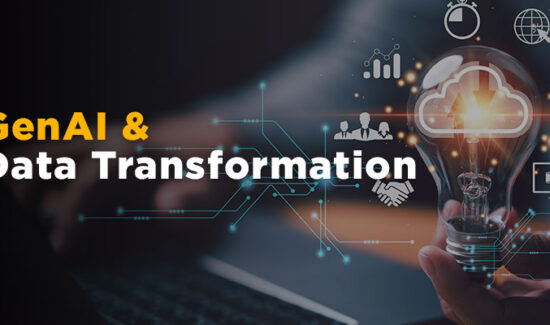Colin Mahony’s Four Big Data Trends to Watch for in 2016

 By Colin Mahony
By Colin Mahony
Big Data represents a disruptive force to the way the world does business. Think of this – a company’s ability to plan for the future used to be limited to analyzing past trends. Though somewhat useful the past is never a completely accurate indicator of what will happen in the future. Today, with Big Data and analytics, organizations can harness all their data, both inside and outside the enterprise, to enable smarter, more precise action and planning than ever before.
As 2015 draws to a close, I want to highlight some of the key considerations for enterprises as they think about their Big Data and analytics strategy for improving their bottom line.
Access to data powers innovation
For Big Data initiatives to have any chance for success, leaders within an organization need to understand the importance of doing away with the “silo mentality.” Various groups within an organization may be able to glean insights from analyzing different types of data but they miss the opportunity to have an aerial view of all the data and information that could be available to them if people continue to operate in silos, thereby missing a huge opportunity to make critical correlations between the different types of data that can enhance the inherent value of each individual data set.
It is an important first step to define the desired business outcome, which then leads to identifying the data sources, both inside an enterprise and in the public domain, such as social and professional media content, that will add value to the business insight needed. The third step is to ensure that all data sources and data types can be ingested and analyzed by a data analytics engine that can deliver the speed of real time insights at scale, with the security and the manageability that enterprises require. Finally, providing the analysis in a consumable fashion for business leaders is critical to business action.
While this seems straightforward, technology limitations often demand that a business compromises on the speed and the scale that is required in today’s data-driven world, but businesses who accept compromise will not succeed. No compromises, no limits must be the mantra for every data-driven organization.
![]() Download our free Big Data Integration Buyers Guide! The resource includes a complete market overview, comprehensive vendor profiles, a capabilities reference and much more.
Download our free Big Data Integration Buyers Guide! The resource includes a complete market overview, comprehensive vendor profiles, a capabilities reference and much more.
Better questions mean better answers
Think about a conversation you might have with a colleague. You ask a question and you get an answer. This often leads to more questions, for further clarification, or because the first answer gave you information that you really hadn’t considered. The dynamics with data analytics are similar.
Historically, business analysts created a standard set of queries that were submitted with SLAs that required hours, days and sometimes even weeks to return the results. What if a report you needed access to was only available twice a month – that wouldn’t work in the world we live in today. What is needed is an active conversation with the data – the ability to use a common language (SQL) that business analysts speak fluently and to engage with the data in a series of queries that are based on the results received during the conversation. This is how questions will get smarter and answers will get better.
Technology doesn’t replace people
Business insights from data are critical but people are needed for two irreplaceable roles. First, data scientists are the people who ensure that an ongoing, meaningful conversation with all forms of relevant data is the foundation for decision making. They see the business needs through the data lens and guide the organization toward the right data and the right questions but even more important than the role of the data scientist is the overall culture of a data-driven enterprise.
Data insights mean nothing if an organization is not committed to acting on the insights provided by the data in a very rapid manner. Today, reporting is no longer historical but instead predictive and that’s only the first step. Predictive is rapidly moving toward preemptive, and data-driven organizations that can identify what is coming, protect the positive while at the same time influencing the predicted negative will lead. This means that the culture of data must be embedded deeply in all employee populations, with data scientists themselves leading the way as part of every function.
Manage the risk to maximize reward
In order to maximize the reward from data, we must first remove the fear. None of us is against data analysis that can fight cancer, or improve education, or protect the environment. However, we are all against our personal information being shared without approval or due to a hack. Privacy and data security are the justifications for mandatory compliance and regulatory requirements. An organization that prioritizes privacy and data security at every step of their analytics strategy will build the confidence necessary to address the fear. This also means a commitment to enterprise grade technology despite the promises of innovation and low cost of less mature open source technologies. Planning not just to prevent the breach but also for the actions that will be taken when a breach occurs is a sign of a successful data-driven enterprise. Committing to the right technology, the right processes and an ongoing education for all employees on their responsibilities for privacy and data security will minimize risk and maximize rewards.
Big Data will continue to grow in size and scope and harnessing and analyzing all the data within an organization – both structured and unstructured – is critical. Taking the above guiding principles into account will help an organization’s leadership, IT teams, and the technology vendor community, to put the data to good use and can help an organization positively impact revenues, customer satisfaction and brand awareness.
Want more predictions? Click here for part 1 of Bernard Harzog’s 2016 Big Data market predictions.
 Colin Mahony leads the Hewlett Packard Enterprise Big Data Platform business group, which helps organizations leverage all forms of data to improve outcomes. The Big Data Platform business includes the industry leading advanced analytics Vertica database, IDOL Enterprise software for analysis of human data, and Haven OnDemand, a platform for developers to leverage APIs and on demand services for their applications. Connect with him on LinkedIn.
Colin Mahony leads the Hewlett Packard Enterprise Big Data Platform business group, which helps organizations leverage all forms of data to improve outcomes. The Big Data Platform business includes the industry leading advanced analytics Vertica database, IDOL Enterprise software for analysis of human data, and Haven OnDemand, a platform for developers to leverage APIs and on demand services for their applications. Connect with him on LinkedIn.






















